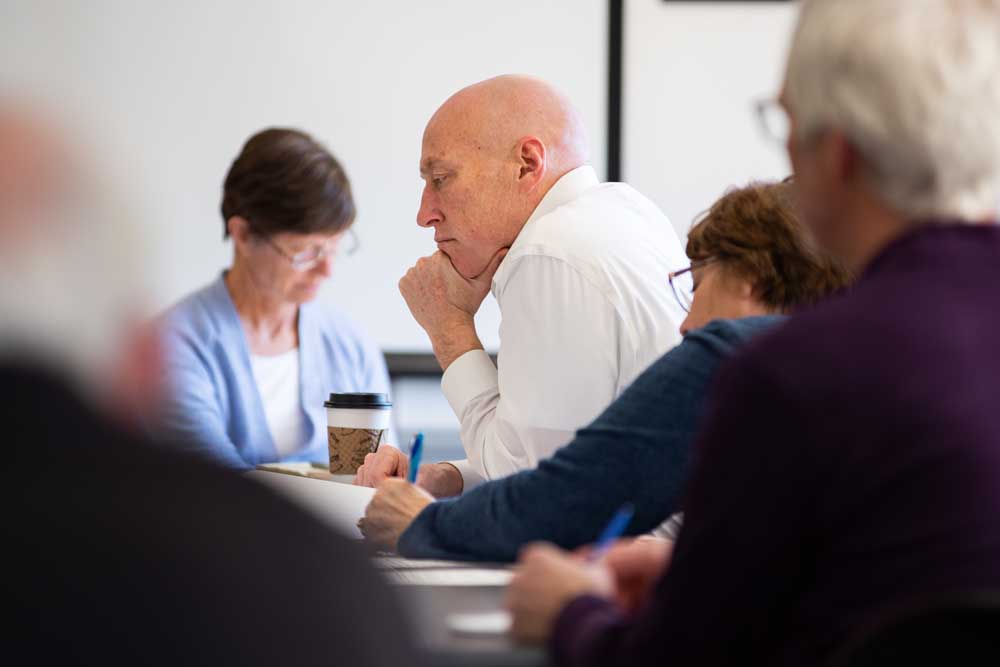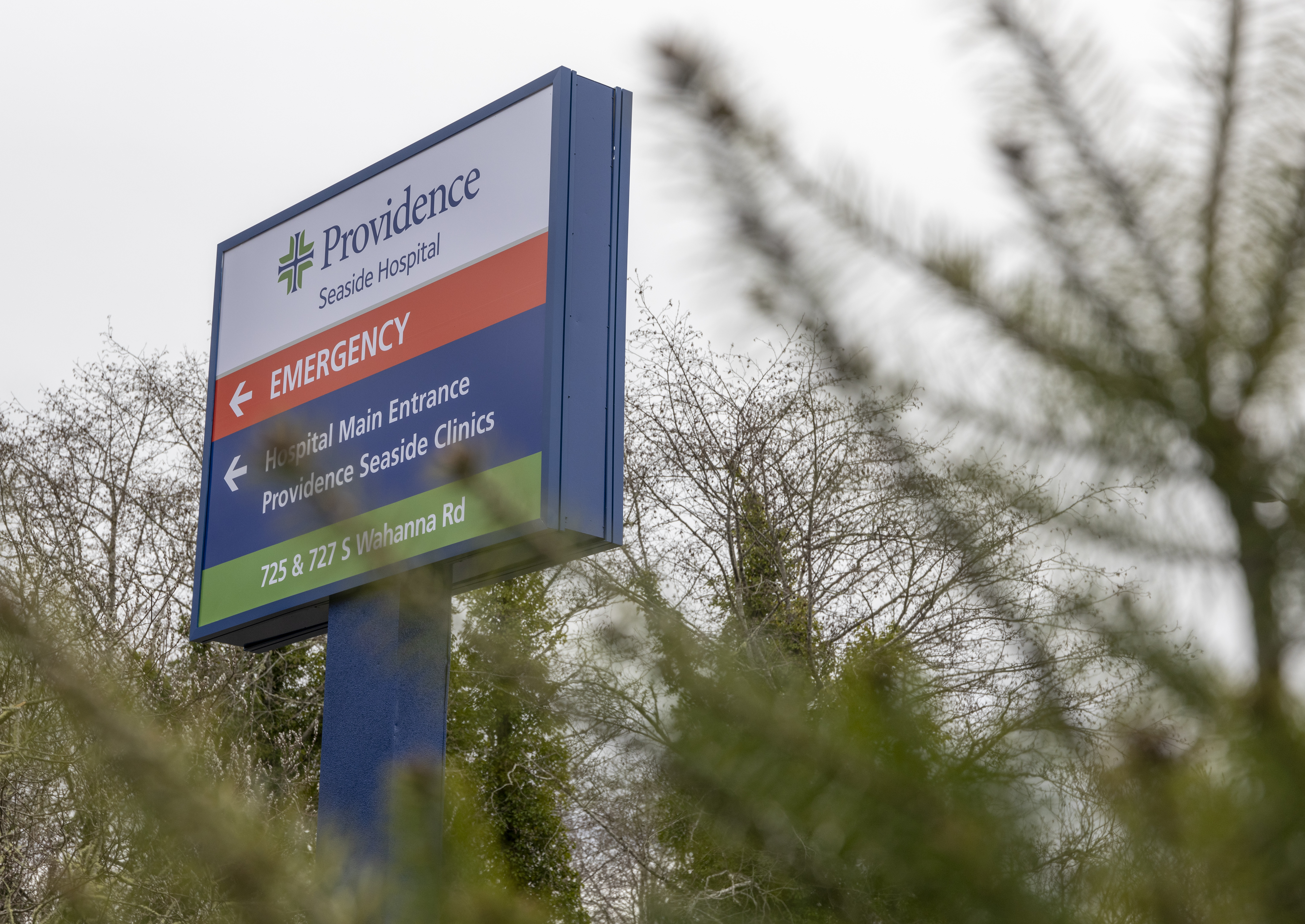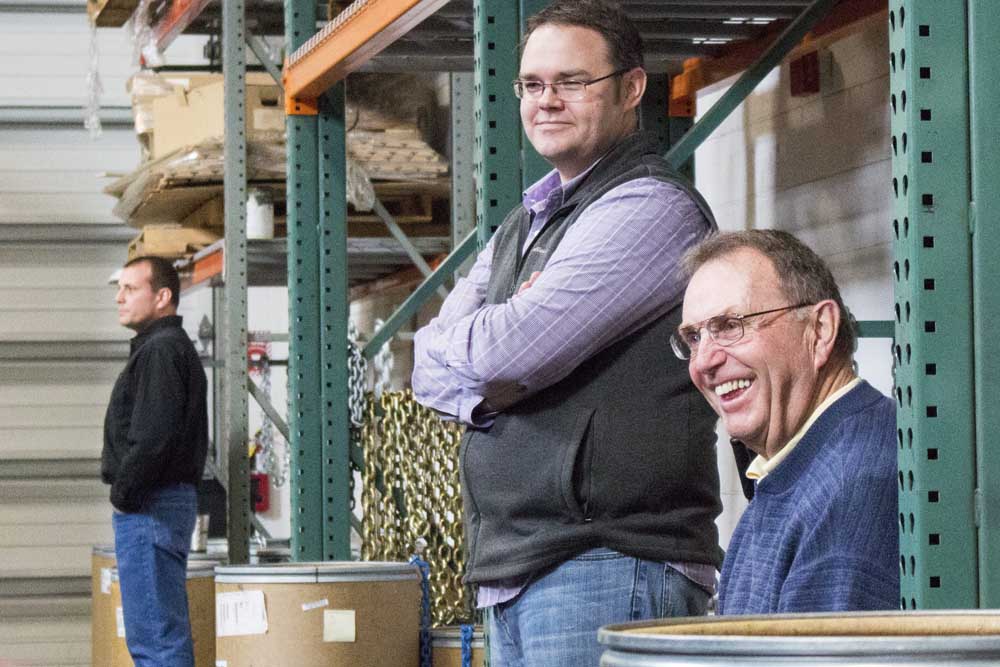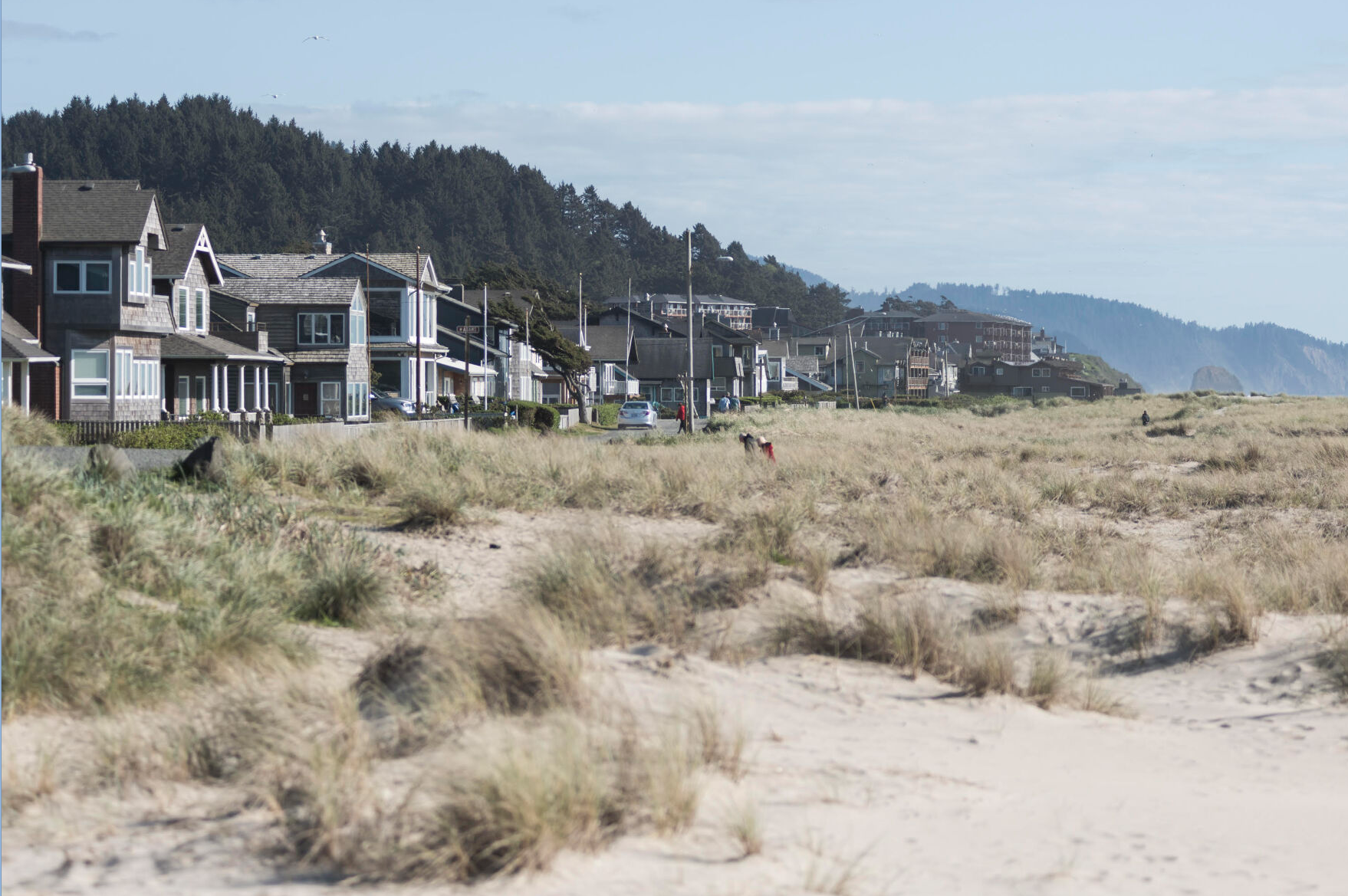Weekend Break: Revisiting the Salvage Chief
Published 1:00 pm Friday, January 24, 2025
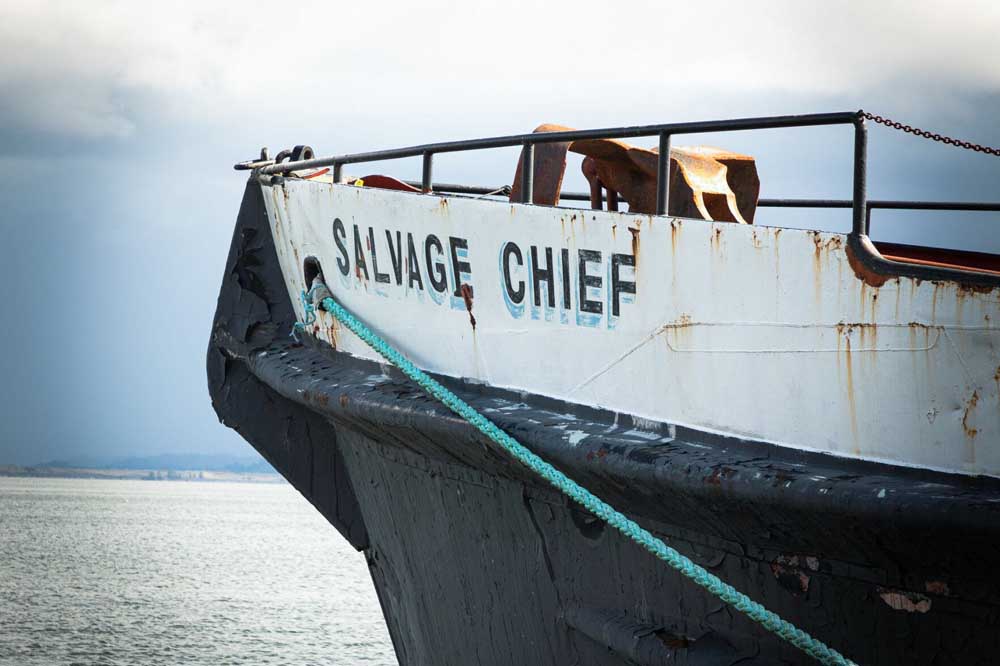
- The vessel has been moored at Tongue Point since 2009.
Following World War II, the recycling of war materials became big business. Many towns had an Army and Navy store.
Trending
The citizens of the United States had bent their collective backs to produce enough of everything — firearms, shells, airplanes, uniforms and helmets, ships, tanks, C-rations, shortwave radios, Jeeps and 1,001 other items — to adequately supply the armed forces with all they needed, in company with our allies, to win the war.
One group of items dear to the hearts of Oregonians were the Liberty ships — cargo and troop carriers — produced by Kaiser Shipyards’ Oregon Shipbuilding Corp. along the Willamette River in Portland.
After the war was over, there were uncounted numbers of leftovers. One such remainder was the decommissioned Liberty ship renamed SS Yorkmar, which had been repurposed as a freighter.
Trending
In December 1952, the Yorkmar found itself aground on the beach near Grays Harbor, Washington. It was so far aground, in fact, that at just the right stage of the tide, the ship was literally “high and dry” — observers could walk all the way around its 400-foot length. Those who stood watch were certain it was there to stay.
However, entering stage left, from the south, came a new kind of vessel, one especially modified and rigged to pull wrecked ships off a beach. This new ship, the Salvage Chief, was also a retread from World War II.
Longtime Oregon salvage diver Fred Devine bought a surplus Landing Ship Medium, LMS-380, a vessel with a remarkably shallow draft, which could come to the water’s edge to offload troops, tanks or whatever was needed on the Pacific front. He modified the veteran vessel and fitted it out with salvaged items such as very heavy-duty winches, massive anchors and stout cables. The result was the rechristened Salvage Chief.
Devine’s business plan was to plant the anchors of the 200-foot-long Chief offshore in the ocean, run multiple heavy cables to a wrecked vessel, then put the winches to work taking up the slack in those cables.
As the tide flooded around the stranded ship, Devine’s crew maintained the tension on the cables, and, as the sea lifted the wreck just a bit, the Chief would pull, slowly, and the beached victim would eventually come loose of the sand’s grip. With high enough tides and enough strain on the cables, and with the sure-footed anchors remaining sunk in the seafloor, wrecked vessels could be refloated.
The Coos Bay World described the Salvage Chief as “a floating powerhouse, machine shop, and salvage vessel from Portland.” The ship was crewed by a remarkable group of creative seagoing men.
It was twice the size of many ships it would salvage.
The Yorkmar rescue
As for the Yorkmar and its curious and skeptical onlookers, rescue took a while. The Daily Chronicle of Centralia reported on Dec. 9, 1952, “… an ominous weather forecast demanded full speed in making the attempt to pull the (Yorkmar) into deep water.”
“The Coast Guard said the Yorkmar had been working in toward shore all night, and expressed fear the ship might become a casualty of the sea.”
The next day, the newspaper reported that the U.S. Coast Guard was attempting to pass a towline to the 7,200-ton victim, which was “fast aground but apparently undamaged.”
The day after, The Olympian reported that “ … 30- to 45-mile-an-hour winds would continue to buffer the 7,207-ton Liberty ship through Thursday, complicating if not preventing a hoped-for attempt to drop a messenger line aboard from a helicopter.”
The salvage attempt was the focus of so much attention because no vessel that large and that firmly ashore had ever been refloated. The Salvage Chief brought a new element to the battle between ship and shore.
Several more days passed. On Dec. 16, The Olympian informed readers that the Salvage Chief had been joined in its endeavors by the tug Sea Lion from San Francisco and that the work continued:
“An all-out effort by two tugs to pull the stranded freighter Yorkmar from a Pacific Ocean beach west of here apparently was delayed Tuesday for at least another day. The 7,000-ton ship has been trapped in the sand for eight days.”
Finally, The Columbian was happy to report that the freed freighter had left Astoria for Portland.
“The Yorkmar was pulled free shortly after noon Thursday after being grounded for 11 days. Heavy seas which drove the Calmar Steamship Corp. vessel aground had hampered rescue operations but Capt. Oscar Kullbom of Portland and his 36-man crew stayed with the ship the entire time. The Yorkmar arrived here under its own power about 10:30 p.m. Thursday. It was to go into drydock in Portland for inspection.”
Everett’s Daily Herald concluded the story by writing, “Old timers had said they doubted the ship could be saved after it ran aground Dec. 8. It was the first time that shipping men could remember a ship being pulled free in good condition from a position broadside to the beach. The tugs Salvage Chief and Sea Lion did the job of pulling the Yorkmar free.”
A roster of rescues
The dramatic rescue of the Yorkmar was in the vanguard of perhaps 300 notable such jobs by the Salvage Chief over the next 70 years until 2016, when the ship was hired to muscle the unloaded fuel barge Millicoma from the rocks of North Head.
Its operations were many and fascinating, like this story from 1953.
From the Corvallis Gazette of Nov. 17, 1953: “The tug Salvage Chief was scheduled to leave here early today for a point off Long Beach, Wash., where it will attempt to free a barge loaded with 700 tons of shells,” which were being transported from Bangor, Washington, to an ammunition depot at Umatilla.
On Nov. 27, the Chinook Observer wrapped it all up:
“After laying in the breakers off Long Beach from Tuesday of last week until Sunday, Fred Devine and his Salvage Chief tug finally won a ‘tug-o-war’ (with the) … beached 204 ft. barge Otsega … when the barge loaded with 700 tons of U.S. army ammunition yielded to the Chief’s power, and slowly gave ground until approximately two hours later she was free of the savage breakers.
“Hundreds of car horns blared, and five or six hundred voices of spectators lining the beach cheered, as the Chief won its battle against great odds. Devine’s famous tug lost two anchors during her fight with the sea.”
Better navigation
As the arts of navigation, and in particular of sophisticated electronic wayfinding systems, have developed throughout the 20th and into the 21st centuries and become more precise, the need for the Salvage Chief has lessened: fewer large vessels have found themselves ashore.
As of 2025, the sturdy Salvage Chief remains afloat, berthed in Astoria. Its remaining crew members, engineering wizards that they are, continue to look around for its next career. One possibility is fitting the ship out to provide assistance following a Cascadia Subduction Zone earthquake.
Whatever turns up, the Salvage Chief’s crew knows its substantial capabilities.


